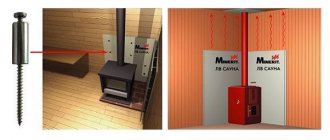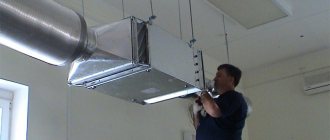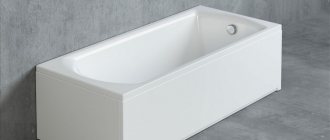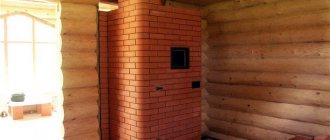17.08.2020
Flammability is an important property of various substances and materials, which shows their tendency to burn, both weak (smoldering) and strong (spontaneous combustion). Knowledge of flammability classification is required for many industrial and economic sectors, but perhaps these indicators are most important in construction. We’ll talk about the flammability of various substances and materials in our article.
Substances and materials
Almost all substances and materials, especially those used in construction (finishing, thermal insulation, etc.), are assigned their own flammability group, when determining which the aggregate state of the substance is necessarily taken into account.
Solids, incl. dust
Solids make up the majority of materials used in construction. Typically they are divided into:
- non-flammable/absolutely non-flammable;
- fire-resistant;
- flammable.
Non-flammable substances are not capable of igniting or burning on their own in air, however, this does not mean that they are completely safe from a fire point of view. Such substances may well become fire hazardous in certain interactions with oxidizing agents, with each other, and even with water.
Refractory substances are those objects and materials that can be set on fire under normal conditions and they will burn until the source of ignition (fire) is removed or eliminated, after which their combustion stops.
Substances classified as flammable can even spontaneously ignite when certain conditions arise; they also burn in the presence of a fire source and continue to burn with varying degrees of intensity, including after the elimination of such a source.
Important! Dust is solid substances that have been dispersed (that is, they have been mechanically destroyed or finely/finely ground to the state of powders, suspensions, emulsions), with a particle size of less than 850 microns.
Gases
The flammability of gases is determined by an indicator called the “concentration limit” - the maximum concentration of a particular gas in a mixture with air (or other oxidizer), at which the resulting flame spreads from the point of its origin (ignition) to any distance (from several centimeters to more significant indicators).
Non-flammable gases are gases that cannot ignite on their own and that do not have a concentration limit.
The most dangerous are gases (or their vapors), for which one small spark is enough to ignite, for example, gas supplied to residential buildings to ensure the operation of gas stoves.
Liquids
The flammability of liquids is determined by their ignition temperature and their ability to maintain combustion in the absence of an ignition source.
Non-flammable liquids are considered to be liquids that under normal conditions in a normal air atmosphere are not capable of ignition.
The most dangerous are flammable liquids that flare up even at normal summer temperatures of 25°C-28°C, such as ether, acetone, etc.
Liquids that ignite at a temperature of about 61°C-66°C are considered flammable; this group includes the well-known kerosene or the low-toxic white spirit, beloved by business men.
Classification
The intensity of the combustion process and the conditions under which it occurs determine the likelihood of a fire intensifying and an explosion occurring. The outcome of the incident depends on the totality of the properties of the feedstock.
General division
According to the national fire and explosion hazard standard, substances and various materials made from them are divided into the following groups:
- absolutely non-flammable;
- difficult to burn;
- flammable.
Non-flammable substances cannot burn in air, which does not exclude interaction with oxidizing agents, with each other, and with water. Consequently, some members of the group pose a fire hazard under certain conditions.
Compounds that are difficult to combust include those that burn when ignited in air. As soon as the source of fire is eliminated, the burning stops.
Under certain conditions, flammable substances ignite on their own or in the presence of a fire source and continue to burn intensely.
The classification of flammability of construction raw materials and products is discussed in a separate updated standard. National construction standards take into account the categories of all types of products used in work.
According to this classification, non-combustible building materials (NG) are divided into two groups depending on the test mode and the values of the indicators obtained.
Group 1 includes products in which the temperature inside the oven increases by no more than 50 ℃. The reduction in sample mass does not exceed 50%. The flame does not burn at all, and the heat released does not exceed 2.0 MJ/kg.
Group 2 NG includes materials with the same indicators of temperature increase inside the furnace and weight loss. The difference is that the flame burns for up to 20 seconds, the heat of combustion should not be more than 3.0 MJ/kg.
Flammability classes
Combustible materials are examined according to similar criteria and are divided into 4 groups or classes, which are designated by the letter G and the number next to it. For classification, the values of the following indicators are taken into account:
- temperature of gases released with smoke;
- degree of size reduction;
- amount of weight reduction;
- flame retention time without a combustion source.
G1 refers to a group of materials with a smoke temperature not exceeding 135 ℃. The loss of length is 65%, weight loss is 20%. The flame itself does not burn. Such construction products are called self-extinguishing.
G2 includes a group of materials with a smoke temperature not exceeding 235 ℃. The loss of length is 85%, weight loss is 50%. Self-combustion lasts no more than 30 seconds.
G3 includes materials whose smoke temperature does not exceed 450 ℃. The loss of length is more than 85%, weight loss - up to half. The flame itself burns for no more than 300 seconds.
The G4 flammability group includes materials with a smoke temperature exceeding 450 °C. Loss of length exceeds 85%, weight loss – more than 50%. Self-combustion lasts more than 300 seconds.
It is acceptable to use the following prefixes in the name of each flammability group in order of increasing digital index:
- weak;
- moderately;
- Fine;
- highly flammable materials.
The given flammability indicators, along with some other characteristics, must be taken into account when developing project documentation and drawing up estimates.
The ability to generate smoke, the toxicity of combustion products, the speed of possible fire spread, and the likelihood of rapid ignition are also of great importance.
Classification of building materials by flammability
Combustion is a set of physical processes, such as melting, evaporation, ionization, which occur simultaneously, and chemical reactions associated with the oxidation of combustible substances and materials. Therefore, each substance and material used in construction must undergo research conducted by certified organizations to determine their flammability class.
NG – non-flammable
Non-combustible materials include those that are not capable of self-ignition under normal conditions in air. However, as stated above, they may well catch fire or sustain a fire when interacting with other materials and compounds.
In this case, non-flammable substances are divided into 2 groups:
- NG1 - completely non-flammable, which did not burn during testing, reduced weight by no more than 50% and released heat within 2.0 MJ/kg;
- NG2 are practically non-flammable, which during testing showed weak short-term combustion (up to 20 seconds), and the calorific value did not exceed 3.0 MJ/kg.
Important! Fire safety characteristics and standards are not applied to materials and substances classified as NG (completely non-flammable).
G1 – low-flammable
Such materials stop burning immediately after excluding the flame source, do not burn on their own, and during testing they lose no more than 65% of their original length and no more than 20% of their original mass, while the temperature of the resulting smoke does not exceed 135°C.
Construction products with such characteristics are called self-extinguishing.
G2 – moderately flammable
Moderately flammable substances and materials, after eliminating the source of ignition, continue to burn on their own for 1-30 seconds, while heating the smoke to a rather dangerous temperature of 235°C. Also, such materials demonstrate a more significant loss of length (up to 85%) and weight (up to 50%).
G3 – normal flammable
The loss of length and weight of materials from this group corresponds to the values established for G2, that is, up to 85% of the length and up to half the weight. However, materials classified in this group continue to burn for several minutes (from 30 seconds to 300 seconds) and heat the smoke to a temperature of 450°C.
G4 – highly flammable
Materials capable of burning independently for more than 300 seconds, heating the smoke to temperatures exceeding 450°C, and losing more than 85% in length and more than 50% in weight.
Important! It is worth keeping in mind that flammable solids, in addition to wood and plastic, also include dry grass and leaves, fabrics (natural and synthetic), leather, rubber, rocks (peat, coal), metals and elements (sodium, aluminum, phosphorus, silicon, etc.)
Self-igniting materials
The most well-known substances that are capable of spontaneous combustion and therefore have an increased fire hazard include:
- brown coal;
- peat;
- sawdust;
- mineral oil;
- white phosphorus;
- ether;
- turpentine.
These substances can ignite on their own just by coming into contact with air. Some of them, such as brown coal and white phosphorus, ignite at normal temperatures, while others require heating of the environment to initiate the reaction. In accordance with GOST 12.1.011-78 on the classification of explosive mixtures, all such elements are divided into groups according to their auto-ignition temperature. Group T6 is assigned to substances with the lowest spontaneous combustion temperature within 85 ℃, T1 - with the highest, over 450 °.
Some substances ignite upon contact not with atmospheric air, but, for example (and oddly enough) with water. These include sodium, calcium and magnesium hydrides, a mixture of iodine and zinc.
Other groups of substances may burst into flames upon contact with strong acids, such as nitric acid.
Spontaneous combustion is not always accompanied by flame. In particular, peat or sawdust, in contact with the atmosphere, can slowly smolder, producing a large amount of smoke, but almost no flame.
Class confirmation
Confirmation of the flammability class is carried out both in laboratory conditions and in open areas using special equipment. In this case, standard techniques are used, different for non-combustible and combustible building materials.
In the case when the product being tested consists of several different materials (or layers), each material (layer) included in it is necessarily tested for flammability, and the final result - the flammability class assigned to the product as a whole - will be equal to the highest class of all , assigned to individual components of the product.
During laboratory testing, special requirements are placed on the room - it must be maintained at room temperature and normal humidity, there must be no drafts and excessively bright natural or artificial light that interferes with taking readings from the displays. The instrument used must be calibrated, tested and preheated.
At the first stage, the sample is measured, kept at room temperature for at least 2-3 days, then fixed in a special oven cavity and the recorders are turned on instantly (a delay of up to 5 seconds is allowed).
The oven is then turned on and the sample is heated. Heating is stopped when the temperature change recorded within 10 minutes is less than 2°C - this is considered “reaching temperature balance”.
Then the sample is removed from the oven, cooled in a special device (desiccator), after which weighing and measurement procedures are carried out.
Flammability test method
All building materials, regardless of their multilayer nature and scope of application, are tested for flammability using a single complex and labor-intensive method, each stage of which is subject to mandatory precise recording and is carried out exclusively by organizations that have permission to conduct such studies.
Important! On the territory of the Russian Federation, only a few organizations are authorized to conduct fire tests, including: the Ministry of Emergency Situations of Russia, the Experimental Research Institute, the Pozhaudit ANO, the Kucherenko Research Institute and a number of others.
Flammability testing steps:
- Preparatory - here 12 completely identical samples of the material being tested are prepared, the thickness of which must correspond to the real values at which the material will be used. When testing multilayer materials, samples are taken from each layer.
- Exposure - prepared samples are kept in room-greenhouse conditions (appropriate temperature and humidity in the absence of drafts) for at least 72 hours, while the samples are regularly weighed. When a constant weight is reached during 2-3 consecutive weighings, further weighings are stopped.
- Checking - each of the 12 samples is placed in turn into a pre-calibrated, tested and heated combustion chamber, equipped with air supply and exhaust gas removal systems, and kept there for a certain time.
- Measurements - after completing the verification stage, the sample is removed from the chamber, measurements are taken, mass loss, temperature (and the rate of its fall), the amount of gases released and the burning time without a fire source are recorded.
- Conclusion - at the final stage, measurements taken on all 12 samples are analyzed, while - as a rule - extreme indicators (best and worst) are excluded, after which the material or product is assigned a certain flammability class.
General characteristics
Which flammable substances are such and why? There are several specific characteristics, having which liquid, dust, gases and other substances can be classified as flammable.
For example, the flash point is a value that characterizes the lower temperature limit, upon reaching which a liquid will form flammable vapors. However, it should be noted here that the presence of a fire source near such a steam-air mixture will only cause its combustion, without a stable combustion effect of the liquid itself.
If earlier we talked about the lower concentration limit, then there is also an upper one. LVPV or VKPV are, respectively, values that, when reached, may cause ignition or an explosion of liquid, dust, gases, etc. All types of flammable substances have these limits
However, it is important to note here that if the concentration is lower or, conversely, higher than the specified limits, then nothing will happen even if there is a source of open fire in the immediate vicinity of the substance
Application in construction
Each material and substance used in construction must have a flammability group, which is confirmed by specialized certificates. This requirement applies to all materials: structural, finishing, roofing, insulating, including those that differ in the method of application, purpose and probable loads.
Requirements for most of the materials used are defined by law, for example, for the frames of building ceilings it is permissible to use only materials with the classification attribute G1 or NG, and external cladding made of combustible materials is prohibited for low- and moderate-fire buildings. At the same time, materials of group G4 are also used in construction, but their use requires compliance with additional fire safety measures.
Important! The spread of latent combustion is unacceptable in any building structure! This means that continuous use of combustible materials that are not separated by partitions from products with categories NG and G1 should not be allowed.
It should also be taken into account that building material should not be considered separately, but in combination with other objects and substances, for example: wallpaper with the NG class in itself will not be a fire hazard, however, if they are glued to a wall panel that has a high degree of flammability, then and NG wallpaper will become a completely combustible material.
Results
The flammability class is an important indicator that should be taken into account, especially if construction or repair is carried out independently without the involvement of reliable companies that specialize in such work and have the necessary skills and knowledge regarding the flammability of materials and their compatibility. However, nothing is impossible! The main thing is not to be afraid to ask questions to qualified sellers of building materials and choose products from reliable and trusted manufacturers who strictly follow GOSTs and Standards and do not make mistakes, and especially not deception, when labeling manufactured construction products.











